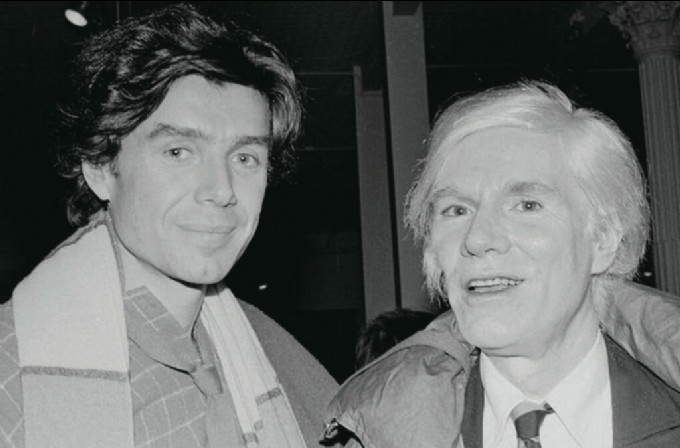Tv & Film
Supreme Court's Landmark Decision: Andy Warhol's Prince Images Violated Photographer's Copyright
In a ruling that could have vast implications in the copyright world, the Supreme Court ruled on Thursday that images of Prince created by Andy Warhol that were based on photos taken by Lynn Goldsmith violated her copyright, according to CNN and multiple news outlets.

The ruling was 7-2.
The court rejected arguments made by the late Warhol’s foundation that the work was sufficiently transformative and did not violate copyright laws. While the work was created in the 1980s, Thursday’s ruling arrives against the backdropp of AI, which has created vast copyright implications over what constitutes originality. Warhol freely coopted many photographs, logos and other forms of artwork — ranging from soap boxes to iconic photos — into his works.
It also follows the decision earlier this month that Ed Sheeran’s song “Thinking Out Loud” did not violate the copyright of Marvin Gaye’s “Let’s Get It On,” although the songs have similar chords and tempos.
“Goldsmith’s original works, like those of other photographers, are entitled to copyright protection, even against famous artists. Such protection includes the right to prepare derivative works that transform the original,” Justice Sonia Sotomayor wrote in the majority opinion.
In a dissent from Justice Elena Kagan that was joined by Chief Justice John Roberts, the she wrote: “It will stifle creativity of every sort. It will impede new art and music and literature. It will thwart the expression of new ideas and the attainment of new knowledge. It will make our world poorer.”
At the center of the case is the “fair use” doctrine in copyright law, which permits the unlicensed use of copyright-protected works in certain circumstances, such as meaning, message and transformations thereof.
Warhol originally created the silk screen images for a 1984 Vanity Fair article about Prince, basing them on photos taken by Goldsmith three years earlier. The copyright issues arose in force after Warhol’s image was reused by Vanity Fair owner Conde Nast in the wake of Prince’s death in 2016.
In 2019, a federal judge ruled that Warhol’s images had “transformed Prince from a vulnerable, uncomfortable person to an iconic, larger-than-life figure.” However, two years later a federal appeals court overturned that decision, leading to the Supreme Court case. That court ruled that Warhol’s “signature style” was not sufficiently transformative to Goldsmith’s image and did not create a work that was “fundamentally different and new.”
The Recording Industry Assn. of America and the National Music Publishers Assn. had long advocated for a copyright violation decision in this case. On Thursday morning, the NMPA said in a statement:
“Today’s Warhol Foundation decision is a massive victory for songwriters and music publishers. This is an important win that prevents an expansion of the fair use defense based on claims of transformative use. It allows songwriters and music publishers to better protect their works from unauthorized uses, something which will continue to be challenged in unprecedented ways in the AI era.
“As we reinforced in our amicus brief, copyright owners should have the right to make or approve decisions about new, reimagined uses of their works. This decision enhances our ability to protect songwriters from increasingly broad claims from would-be infringers of fair use, strengthening creators’ rights to determine how their art is exploited and valued.”
Latest News
In a ruling that could have vast implications in the copyright world, the Supreme Court ruled on Thursday that images of Prince created by Andy Warhol that were based on photos taken by Lynn Goldsmith violated her copyright, according to CNN and multiple news outlets.

The ruling was 7-2.
The court rejected arguments made by the late Warhol’s foundation that the work was sufficiently transformative and did not violate copyright laws. While the work was created in the 1980s, Thursday’s ruling arrives against the backdropp of AI, which has created vast copyright implications over what constitutes originality. Warhol freely coopted many photographs, logos and other forms of artwork — ranging from soap boxes to iconic photos — into his works.
It also follows the decision earlier this month that Ed Sheeran’s song “Thinking Out Loud” did not violate the copyright of Marvin Gaye’s “Let’s Get It On,” although the songs have similar chords and tempos.
“Goldsmith’s original works, like those of other photographers, are entitled to copyright protection, even against famous artists. Such protection includes the right to prepare derivative works that transform the original,” Justice Sonia Sotomayor wrote in the majority opinion.
In a dissent from Justice Elena Kagan that was joined by Chief Justice John Roberts, the she wrote: “It will stifle creativity of every sort. It will impede new art and music and literature. It will thwart the expression of new ideas and the attainment of new knowledge. It will make our world poorer.”
At the center of the case is the “fair use” doctrine in copyright law, which permits the unlicensed use of copyright-protected works in certain circumstances, such as meaning, message and transformations thereof.
Warhol originally created the silk screen images for a 1984 Vanity Fair article about Prince, basing them on photos taken by Goldsmith three years earlier. The copyright issues arose in force after Warhol’s image was reused by Vanity Fair owner Conde Nast in the wake of Prince’s death in 2016.
In 2019, a federal judge ruled that Warhol’s images had “transformed Prince from a vulnerable, uncomfortable person to an iconic, larger-than-life figure.” However, two years later a federal appeals court overturned that decision, leading to the Supreme Court case. That court ruled that Warhol’s “signature style” was not sufficiently transformative to Goldsmith’s image and did not create a work that was “fundamentally different and new.”
The Recording Industry Assn. of America and the National Music Publishers Assn. had long advocated for a copyright violation decision in this case. On Thursday morning, the NMPA said in a statement:
“Today’s Warhol Foundation decision is a massive victory for songwriters and music publishers. This is an important win that prevents an expansion of the fair use defense based on claims of transformative use. It allows songwriters and music publishers to better protect their works from unauthorized uses, something which will continue to be challenged in unprecedented ways in the AI era.
“As we reinforced in our amicus brief, copyright owners should have the right to make or approve decisions about new, reimagined uses of their works. This decision enhances our ability to protect songwriters from increasingly broad claims from would-be infringers of fair use, strengthening creators’ rights to determine how their art is exploited and valued.”

Jennifer Lopez looks ageless in a towel in no-makeup video

Amanda Holden spanks her derriere and thanks Spanx

Amanda Holden shows off more than bargained as she dances around in her outfit of the day

Meet Harley Cameron, the stunning model who went from a BKFC ring girl to become a pro wrestler and found love

GreenGirlBella, Rocks Emirates Stadium in Painted Home Kit

Amanda Holden calls herself a 'good girl' in white dress with 'cheeky' split

Mum slammed by parents after flashing thong in school run outfit

Lottie Moss makes jaws dropp as she shows off her flawless body

Amanda Holden wears nothing beneath plunging white dress












Comments
Written news comments are in no way https://www.showbizglow.com it does not reflect the opinions and thoughts of. Comments are binding on the person who wrote them.